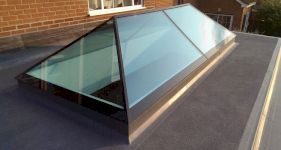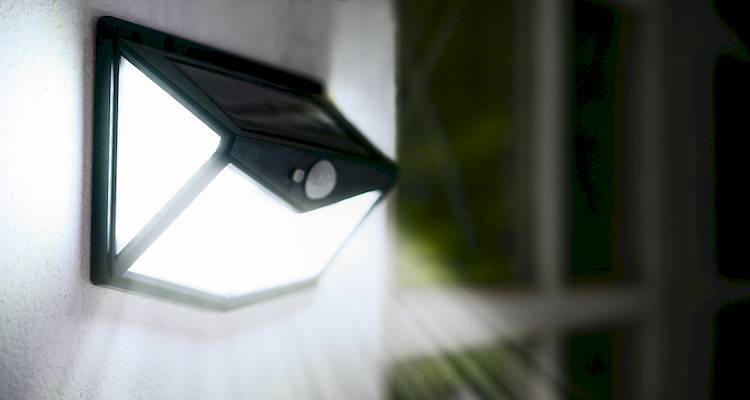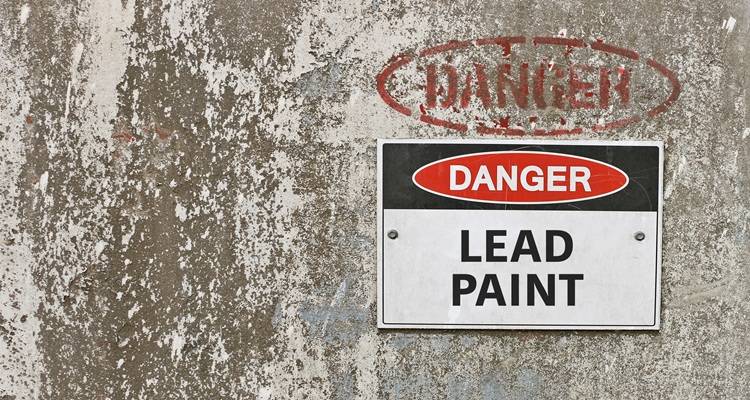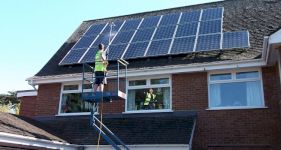Mansard Loft Conversion Cost
- The average cost of a mansard loft conversion is around £67,500.
- The job will usually take between 6 - 8 weeks.
- A complete pricing information breakdown, including what impacts loft conversion costs, and what this type of job usually entails.
- How long the job will approximately take and what's involved.
- How to find and hire a loft conversion specialist.
Find out just how much a mansard loft conversion costs!
In this guide, we're going to explore everything you need to know about mansard loft conversion costs, the different types of loft conversions available and all the costs associated with these types of jobs.
On average, it will cost approximately £67,500 for a mansard loft conversion.
Ready to get a quote?
MyJobQuote has a Trustpilot score of 4.8 (30,000+ reviews) and is used by more than 1 million homeowners across the UK every year.
Tell us a bit about what you're after and we'll connect you with loft conversion specialists near you. They'll provide you with free, no obligation quotes for this type of job.
Want to find out more before you start comparing prices?
Take a look at the full guide below!
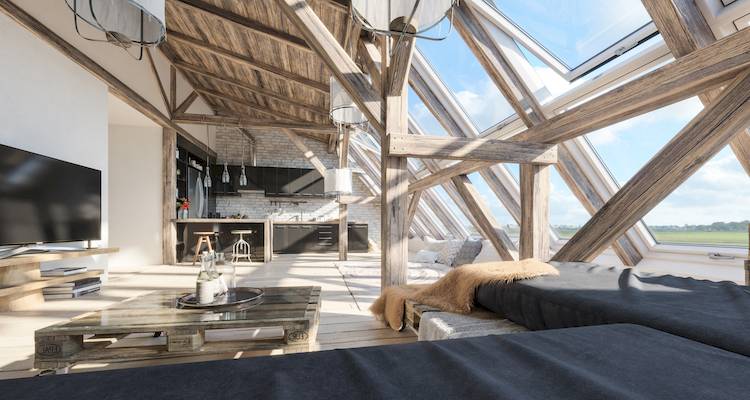
£67,500
Table of Contents
- How Much Does a Mansard Loft Conversion Cost?
- What Is the Cost of Mansard Loft Conversion Materials?
- Additional Mansard Loft Conversion Costs
- How Much Does Labour for a Mansard Conversion Cost?
- How Long Does a Mansard Loft Conversion Take?
- What Impacts Mansard Loft Conversion Costs?
- What's Involved in Building a Mansard Loft Conversion?
- Can I Build a Mansard Loft Conversion Myself?
- Building Regulations & Planning Permission for a Mansard Loft Conversion
- Types of Mansard Loft Conversions
- Hiring Contractors to Build a Mansard Loft Conversion Checklist
- FAQs
- Sources
How Much Does a Mansard Loft Conversion Cost?
A mansard loft conversion can often cost between £55,000 to £80,000 (and potentially in the region of £70,000 to £90,000 for high-cost locations such as central London). Of course, the overall cost will be influenced by the quality of construction, fittings, and the complexity of the construction.
For example, if a bathroom is added, services for electricity and plumbing will need to be rerouted, and roof styles will vary, with some being more complex than others.
Mansard loft conversions are typically one of the more expensive loft conversion options compared to a dormer or hip-to-gable conversion.
Still, they provide the most floor area and interior design options. If you have a lot of mansard loft conversion ideas in terms of the design elements, mansard loft conversions are the best option for you to achieve your dream loft space.
As a result, building a Mansard extension can enhance your space while also increasing the value of your home. Here, we will go over all the information you need to know and the costs of having a mansard loft conversion!
The price of a mansard loft conversion is determined by various factors, not the least of which are the size and location of the property. In addition, the quality of the finish, as well as the fixtures and fittings, will impact the cost of a mansard loft conversion.
Most house types can accommodate this type of loft conversion, so a mansard roof loft conversion is an option if you have a terraced, semi-detached, or detached home. However, the design specification will vary depending on the property type, affecting the cost.
Because a mansard loft conversion includes changing the full sloping face of the roof to a close angle (at least 72 degrees), structural changes to the entire roof are required, so the larger your home, the higher the cost.
If you choose to install a bathroom, for example, you must pay for the cost of the suite as well as other elements in the finish, which can add thousands of pounds to the cost of the project.
Each mansard addition will be unique, so determining an average cost is difficult, but loft conversions are not cheap. However, the additional living space they provide, particularly in congested cities like London, should not be underestimated, nor should the obvious value be added to the property.
Your house value increase may also be influenced by broader construction trends. Check out the latest construction statistics, which offers insights into these trends.
Is having a mansard roofed attic converted a particularly expensive job? Would this type of loft conversion cost more?
Two deciding factors are the size of the property (i.e., whether it's a small terrace house or a large detached property) and the quality of the finish that you want (particularly any extras such as if the conversion includes adding a bathroom)."
Mansard Loft Conversion Prices
In the table below, you'll find a comparison of how much different types of loft conversion cost in the UK for different-sized spaces.
| Size | 30m² | 40m² | 50m² |
|---|---|---|---|
| Mansard | £30,000 - £45,000 | £40,000 - £60,000 | £50,000 - £75,000 |
| Dormer | £20,000 - £30,000 | £25,000 - £40,000 | £30,000 - £50,000 |
| Gable | £20,000 - £36,000 | £28,000 - £48,000 | £35,000 - £60,000 |
| Velux | £12,000 - £18,000 | £15,000 - £25,000 | £18,000 - £30,000 |
As this table shows, hip-to-gable lof conversion cost and the price of a dormer loft conversions are significantly less than a mansard conversion.
For more information on different types of loft conversions, check out our loft conversion cost guide.
What Is the Cost of Mansard Loft Conversion Materials?
Do you want to save money on your loft conversion? You could think about buying the supplies yourself from a retailer. This section will cover the various supply costs for constructing a mansard loft conversion in your home.
Loft Flooring Prices
Flooring for your loft transformation is one of its most important costs. The cost of loft conversion flooring varies depending on the material used. Vinyl flooring, for example, costs about £6 to £14 per m², whereas laminate costs between £7 and £25 per m².

Hardwood is another popular loft conversion flooring option, ranging from £35 to £45 per m². If you want carpet for your loft conversion, you could perhaps budget between £5 and £30 per m².
Heating Prices
To ensure that your loft conversion is properly heated, installing central heating is one option, or you could potentially remove and replace a radiator from elsewhere if that's a more viable option. A standard horizontal or vertical radiator costs between £50 and £900, even as electrical radiators cost between £90 and £400.
Underfloor heating is more expensive, and it must be installed before your flooring can be installed. Wet underfloor heating typically costs between £60 and £80 per m². The floor is heated by pumping water through pipes.
The second alternative is dry underfloor heating, which typically costs between £30 and £40 per square metre. This includes electric mats and wires connected to the main power supply to heat the floor.
Loft Lighting Prices
Loft spaces prior to being converted aren't usually the brightest area in the house, as such installing light fittings is going to be an important job.
Ceiling lights could be included and are an ideal solution. These start at £7 and can cost up to £4,000 if you want something more luxurious.
Lamps are another popular type of lighting. Table lamps typically cost between £3 and £1,000, while floor lamps cost between £12 and £1,800.
Smart lighting is one of the more advanced lighting options. These can be managed by a smart device and help you save money on energy while also lowering your carbon footprint. Smart lightbulbs range in price from £15 to £170.
Windows Prices
The price of loft conversion windows will differ depending on your style. If you are building a dormer loft conversion, you must consider the cost of dormer windows. Smaller dormers are normally priced at £150, while new window costs for bigger dormers can cost at least £300 per window.
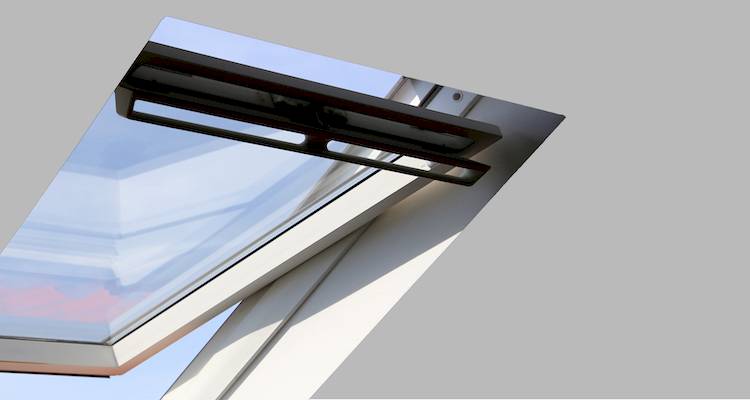
Roof lights are another common loft conversion window design. These are slightly more expensive, ranging from £320 to £550. However, they contribute to the creation of a modern and airy living space and greatly improve the aesthetic.
Additional Mansard Loft Conversion Costs
A mansard loft conversion is typically larger than other loft conversions, and it can add nearly an entirely new storey to the building.
As a result, you may want to make additional improvements to the rest of the property. This section will discuss the additional costs that may be incurred because of adding a mansard loft to your home.
Architect Cost
Not all contractors will require architect plans to complete a mansard loft conversion. However, making plans is still a good idea. It ensures that everyone stays on the same page throughout the project.
Architect prices are around £400 for a basic set of plans, but you can expect to pay up to £1,500 for more detailed plans that highlight the full scope of the work.
Given the project's cost, this is not a large sum, but it can significantly improve results. Another benefit of hiring an architect to create detailed plans is that it prevents you from making up your mind later, saving you money in the long run.
House Painting Cost
The cost of painting a house exterior that's two-story and has three-bedroom house is around £850 in the UK. However, keep in mind that this is only an estimate, and many cost-variable factors will affect the final cost of your project.

These factors include the size of your home, its design, the materials used, and the tradesperson's daily or hourly rates.
For further information, please refer to our cost guide on painting the exterior of a house.
Skip Hire Cost
Of course, a skip, or several skips, will be required when you're getting a loft conversion done.
The tradesperson or team that you hire to complete a loft conversion will likely have a skip hire company that they work with — and may have negotiated lower rates if you let them handle it.
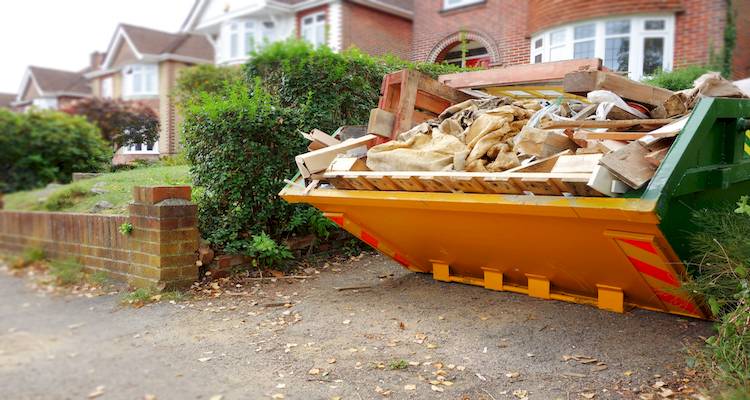
The cost of skip hire, if you wanted to handle it yourself, would be around £200 to £300 per week.
Keep in mind: A skip licence is required if the skip will be placed on the road instead of the driveway or in the garden. This licence must be renewed daily, and the local council determines the cost.
How Much Does Labour for a Mansard Conversion Cost?
Now, let's take a look at labour costs and timescales.
The labour cost of loft conversion is important because the job requires several tradesmen, each of whom will provide a different quote. Please also note, that while the following are average labour fees, these can also vary depending on the experience of the individual and location (for example, tradesmen costs are higher in London and the South East).
Here are the costs you should expect for each type of tradesman to help you get an idea of loft conversion labour costs.
Architect
The architect and structural engineer will create plans and structural calculations, the first labour cost on a mansard extension. These plans must be submitted to the local council's planning authority for processing, which takes at least eight weeks in most cases.
The fee for plan drawing and structural calculations and plan submission to the local authority will be in the region of £700 - £1,000.
Scaffolder Price
If you hire a loft conversion specialist, they will usually have a local scaffolding company that they work with regularly, and the cost of the scaffolding will be factored into your quote.
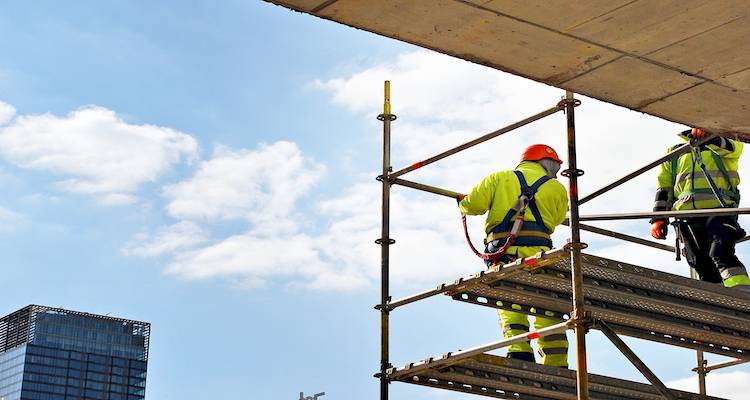
However, if you hire a scaffolding company on your own, you may pay more. The average weekly cost is between £750 and £1,100, depending on location and negotiation with the scaffolding company.
Carpenter Price
First and foremost, fixed carpenters will be the ones who detach the roof and build the loft, so they will be among the first trades on site.
An expert loft carpenter will earn around £130 and £200 per day, depending on where the property is in the country.
Electrician Price
Electricians will perform both a first and second fix on the mansard extension, and these works must be properly scheduled into the design to ensure that all necessary fittings are in the correct place before closing.
An electrician will on average charge between £150 and £250 per day, depending on where they work in the country.
Plumber Price
If a bathroom or kitchen is included in the mansard dormer design, a plumber will be needed for the first and second fix.
A plumber will typically charge between £150 and £270 per day.
Plasterer Price
Some loft conversion businesses will have a team that will install insulation and plasterboard to the loft's timber frame. Other businesses divide this work between the carpenters and plasterers.
A plasterer will charge between £150 and £250 per day, though this may vary depending on where you live in the UK.
Tiler Price
If your mansard loft conversion requires any tiling, such as installing a shower or bathroom, it's a job you could potentially do yourself. However, unless you're confident it's always good to leave it to the experts.
In this instance, a professional tiler will charge around £140 to £250 for a day's work.
Decorator Price
When it comes to finishing touches, painting and decorating is often one of the last jobs before you can start moving in your furniture and other belongings.
As with all tradespeople, prices can vary but an average cost of £120 to £200 per day is a reasonable expectation.
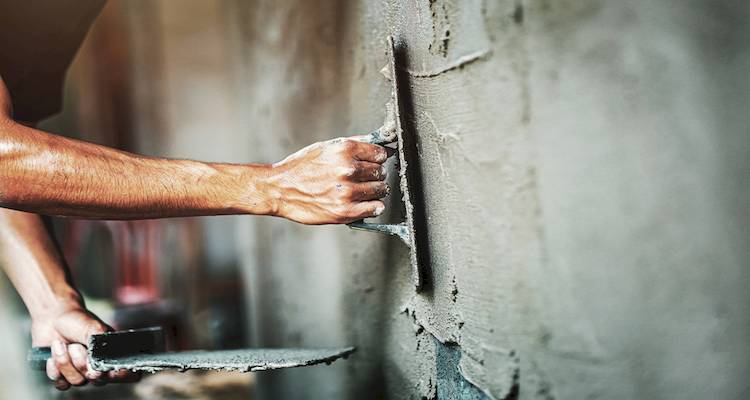
How Long Does a Mansard Loft Conversion Take?
The amount of time spent constructing your loft conversion is important to consider because it will significantly impact the final cost. The longer the job takes, the higher the cost.
While we have based this guide on the average mansard loft conversion taking around 6 to 8 weeks for a basic project, there are a number of factors that can influence each individual situation. This may include more complex builds such as installing an ensuite bathroom, and adverse weather conditions may cause some work to be put on hold.
The size of your space will determine the length of time required and if you have a larger, or more complex, loft conversion then it's not uncommon for the project to take up to 12 weeks in total.
In some cases, such as if planning permission is required for proposed work on a listed building, there can be delays to ensure any relevant paperwork is signed off and approved.
What Impacts Mansard Loft Conversion Costs?
With a mansard loft conversion, there may be additional factors to consider. Numerous factors can raise the cost of a loft conversion above the average, ranging from the need for planning permission to the duration it will take to complete.
The size of the property and the quality of the finish are cost-influencing factors, but so are the need for more architectural involvement and the enhanced demand for services such as heating and hot water.
Finishing Quality
The materials used in the construction and fit-out of a mansard extension would significantly impact the cost. While some materials will be needed to meet specific Building Regulations standards, others will be a matter of preference or budget. Quite often, the option of roof covering is dictated in this manner.
While it may be necessary to adhere to either tiles or slate to maintain the consistency of a street, there is quality and thus price differences available. The price, quality, and durability of man-made slates versus natural slates, for example, will differ.
Location
The cost of a mansard dormer is also affected by the location of your property. For example, labour and material costs will be higher in London and the country's southeast, while prices elsewhere in the UK may be lower.
It may be necessary to commission a bat survey in rural areas because disturbing or disrupting bat habitats is prohibited. A bat survey can cost between £300 and £1,000, depending on whether it is preliminary or comprehensive.
Roof Tiles Type
Suppose the conversion entails replacing the roof, the type of tiles matters because some will almost certainly have to be changed as part of the construction. In addition, converting houses with slate tiles is typically more expensive than converting houses with concrete tiles.
Loft Conversion Dimensions
As you may expect, a larger loft space is likely to be more expensive than a small and straightforward conversion. However, it's not just the overall dimension that impact the cost. For example, if you're looking to convert an area with an unconventional shape, the dimensions and angles will also affect how much work is involved.
Interior Walls
If you decide to divide your new loft space into multiple rooms, the cost of the extra walls must be factored in. It will cost around £850 to install a stud wall and plaster.
What's Involved in Building a Mansard Loft Conversion?
There are several stages involved in completing a mansard loft conversion; if you take on the project, you can expect to encounter all the following, as well as their associated costs.
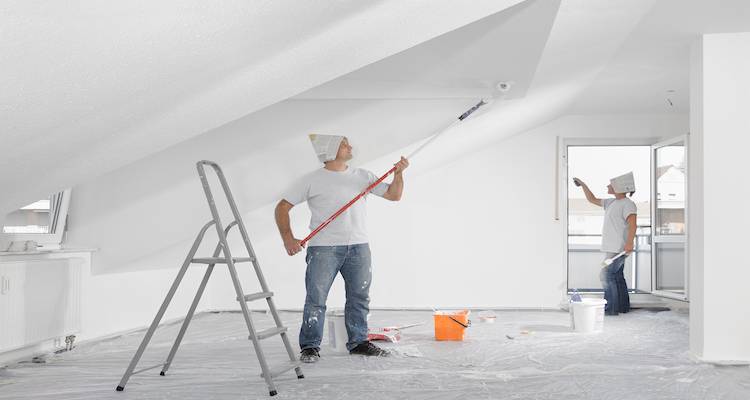
An architect, architectural technician, or surveyor will need to draw up plans for your mansard loft conversion. These plans should include all required structural changes.
Because of the scope of work involved in building a mansard loft conversion, planning permission is normally needed, even though this is not the case for most other loft conversions, which are covered by permitted development rules.
You will need to contact your local authority's planning department to apply for permission to make the changes and have them authorised before you can begin work.
- Week 1: Scaffolding and Opening the Roof. Scaffolding is erected, materials are delivered to the site, and the roof is opened to begin the mansard loft conversion.
- Week 2: Structural Changes and Windows. Structural changes to the roof are carried out this week, including the installation of any required supports and the fitting of roof light windows.
- Week 3: Completing External Work, External work is completed, including finishing the roof structure, replacing and finishing tiles, and installing roof insulation; inside, preparations begin for plumbing and electrical installations.
- Week 4: Installing Floors and Walls. Remaining windows are installed, flooring is laid with proper ventilation, and plasterboard and internal walls are fitted.
- Week 5: Completing Electricals and Interiors. The staircase is installed, electrical work is completed, bathroom fittings (if applicable) are added, doors are hung, plastering is skimmed, and skirting boards are installed.
- Week 6: Wrapping Up. Any unfinished tasks are completed, interior decorating (if part of the contract) begins, and scaffolding is dismantled to finalise the project.
Can I Build a Mansard Loft Conversion Myself?
Converting a loft is not a simple DIY project that can be completed in a few hours or on a whim over the weekend. Instead, it necessitates planning and deliberation.
A mansard loft conversion would give us the extra space we need but I think they can look a bit boxy and ugly. What would you suggest we consider to make a conversion look more attractive?
Can you do it on your own?
If you're an experienced builder that has previously specialised in loft conversions, then technically it would be possible - although even then you'd need an additional pair of hands.
However, in reality, mansard loft conversions are not considered suitable for a DIY project. This is partly due to requiring a significant amount of structural work to be carried out, along with the complexities involved to ensure the building is safe and meets all the necessary building regulations.
Building Regulations & Planning Permission for a Mansard Loft Conversion
In most cases, unless you are significantly changing the appearance of your property, a mansard loft conversion can be completed under the Permitted Development rights. As such, you won't need to apply for planning permission.
However, there are exceptions to this - for example, if your property is a listed building or you live within a protected area such as a conservation area or national park. There are also other circumstances you may need to apply, such as if you're installing a front-facing window that overlooks a main road.
If in doubt, it is recommended you speak to your local planning authority for clarification. If you do need to apply, then this will cost in the region of £200 (exact prices may vary depending on where you live) and it can take between 8 and 13 weeks until approved or declined.
Regardless of planning permission, building regulations are set in place to ensure loft conversions are safe, structurally sound, energy efficient, and compliant with protection against fire.
Your local Building Control Department or a privately approved inspector can review the progress to check standards are being met. At the end of the project they will be able to issue a completion certificate, with the process costing between £350 to £1,250 depending on the scale and complexity of the loft conversion.
If you live in a semi-detached or terraced property, then you may legally require a Party Wall Notice to inform your neighbour of any work being carried out. In this situation, surveyor fees can range from £150 to £200 per hour, with the total cost often reaching around £1,000 in total.
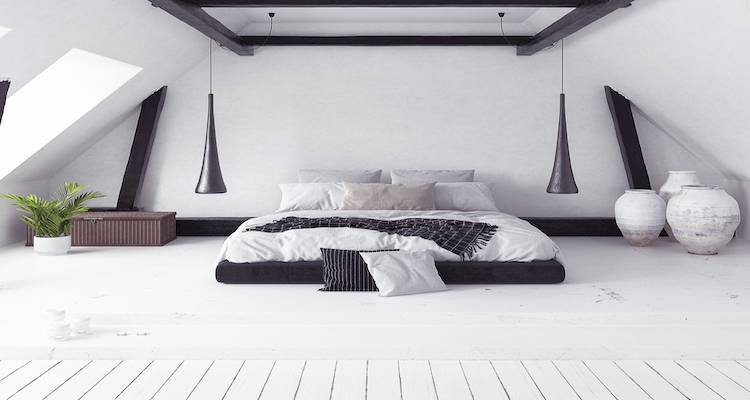
Are double mansard loft conversions structurally strong? And are they durable or high maintenance?
Types of Mansard Loft Conversions
A mansard conversion is typically built at the back of your property and has a horizontal roof with a nearly vertical 72-degree back wall. This creates a large amount of loft space and ensures that the proportions of the room are desirable.
Windows in a Mansard are typically housed in a box-shaped Dormer that slightly projects internal space and allows natural sunlight to flood in.
Furthermore, because the windows are vertically oriented outwards, the Mansard loft conversion appears to have always been a part of your home. This section will discuss the various types of mansard loft conversions and their benefits and drawbacks.
L-Shaped Mansard Loft Conversion
An L-shaped mansard loft conversion is when two structures are built in such a way that they connect. Typically, one is built on the rear outrigger roof and the other on the main roof, giving it the instantly recognisable L-shape.
Because of the shape, L-shaped mansard loft conversions are only suitable for certain properties, primarily Edwardian or Victorian properties with an existing addition at the back known as a two-storey outrigger. This construction style is a great way to get more space out of a property, especially if you own a mid-terrace property.
Pros
✔ Great way to add space
✔ Blends into a home
Cons
✖ Not suitable for every home
Double Mansard Loft Conversion
A double Mansard loft conversion is also available, similar to the standard Mansard conversion. The distinction is that it includes a Mansard on the front side of the property. This sort of loft conversion is prohibited in some jurisdictions.
The double Mansard loft conversion is like a regular Mansard loft conversion, but it includes a Mansard towards the front of the property. These loft conversions are subject to planning restrictions in some parts of the country.
Pros
✔ Popular choice
✔ Adds value to a home
Cons
✖ Need planning permission
Hiring Contractors to Build a Mansard Loft Conversion Checklist
The significance of bringing on the right builder cannot be overstated. It will result in the highest quality build, but having a good partnership with your builder will make sure you get exactly what you want while possibly saving you time and money.
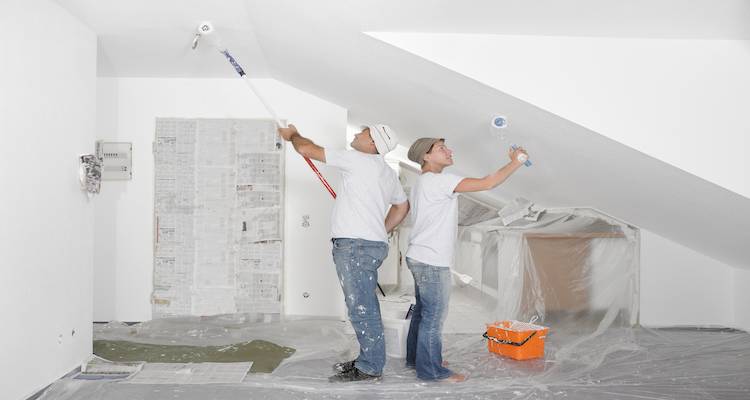
But where do you find such a builder? Use our checklist to find the best contractor for your loft conversion.
- Locate a builder in your area — Finding a local builder can be extremely beneficial when it comes to your construction. Time on site, knowledge of local planning permission, builders' merchants, and other local trades are invaluable nuggets of information that you'll appreciate on-site. In addition, there's no harm in going for a walk around your neighbourhood or taking a short drive around the neighbourhood to see if any construction projects are going on. It will give you an idea of the builders who are active in your area, and if you see a builder's board, it is a sign that, at the very least, this is a builder who is proud of their work and looking for more.
- Get recommendations — Many trades rely on word of mouth, and if you can find a builder through someone you trust, whose work you can go see, you can decide whether they'll do a good job.
- Speak with previous customers — Don't be afraid to ask for a list of previous customers; if they're confident they've done a good job, they should be happy to provide details. This will provide you with an excellent opportunity to learn more about them and see examples of their work first-hand. Meeting previous customers is a great way to learn about the quality of a builder's work and other important factors.
FAQs
Is a mansard loft conversion better than a dormer loft conversion?
Is it worth building a mansard loft conversion?
Why is a mansard loft conversion expensive?
Sources
https://www.planningportal.co.uk/permission/common-projects/loft-conversion/planning-permission
https://www.cncbuildingcontrol.gov.uk/wp-content/uploads/2023/06/CNCD-051-Loft-Conversion-Easy-Guide.pdf
https://www.simplyeasyrefurbs.co.uk/mansard-loft-conversions-an-ultimate-guide/
https://loftconversions.wales/diy-loft-conversion-guide/
https://cityloftslondon.com/mansard-vs-dormer-loft-conversion-all-you-need-to-know/





